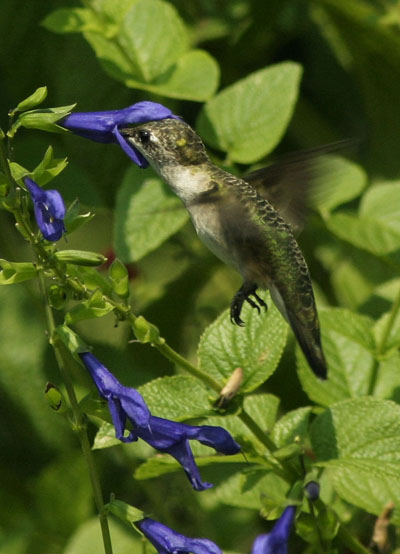I realize that this isn’t exactly timely when it comes to the holiday season, but I can’t imagine there are a lot of people who are turning to me for guidance in what to purchase for christmas, so I refuse to feel bad about it (See? You can justify anything.) Regardless, I present just a few thoughts about equipment and perspective.
Walkabout podcast – Equipment
 This image was shot with a consumer zoom lens, a Canon 75-300mm f4-5.6 Image Stabilized lens. It wasn’t the equipment that provided the pic, but being in the right place, patience, luck, perseverance, and picking the settings that would work the best – see here for more details. While there are certainly cases where better equipment will increase your chances of capturing a particular shot, these represent a small percentage of the factors involved; the majority of things that will impinge on your chances are related to technique, knowledge, and just constantly trying harder. For instance, I knew the hummingbirds were coming to feed from these flowers frequently, and knew both their appearance (even out of the corner of my eye) and the sounds they make. I positioned myself where the light was the best, and chose camera settings to increase my chances. And waited, near-motionless with camera raised, in sweltering weather. A much more expensive lens might have made this shot marginally sharper, or might have produced a few more frames that were worth keeping, but it never would have taken the place of any other factor involved – I would have had to have been using the exact same habits.
This image was shot with a consumer zoom lens, a Canon 75-300mm f4-5.6 Image Stabilized lens. It wasn’t the equipment that provided the pic, but being in the right place, patience, luck, perseverance, and picking the settings that would work the best – see here for more details. While there are certainly cases where better equipment will increase your chances of capturing a particular shot, these represent a small percentage of the factors involved; the majority of things that will impinge on your chances are related to technique, knowledge, and just constantly trying harder. For instance, I knew the hummingbirds were coming to feed from these flowers frequently, and knew both their appearance (even out of the corner of my eye) and the sounds they make. I positioned myself where the light was the best, and chose camera settings to increase my chances. And waited, near-motionless with camera raised, in sweltering weather. A much more expensive lens might have made this shot marginally sharper, or might have produced a few more frames that were worth keeping, but it never would have taken the place of any other factor involved – I would have had to have been using the exact same habits.

And this was taken with a broken lens, and a consumer zoom at that, a Sigma 28-105mm f2.8-4 (okay, so it was a failed aperture motor, and not any kind of cracked glass or anything – allow me a little poetic license.) While a reasonable performer used normally, it does excellent macro work used backwards on the camera – the juvenile mantis in this shot is not 12mm in overall length, and that’s an aphid being consumed. Credit must also be given to the lighting source used, which I’d modified for my own purposes – it was later superseded with a different version. You can save a hell of a lot of money with a little knowledge and a little creativity. Another example of this lens’ performance can be found here, still my favorite arthropod portrait (yes I’m weird.)
By the way, I mentioned in the podcast about wrenching my arm while preventing a nasty fall? That occurred only minutes after this image was taken, which by the way was using that same lens, only before the aperture stopped working.
Meanwhile, my workhorse lens is a Mamiya 80mm macro, designed for the Mamiya M645 series of medium-format cameras (in other words, not digital, and not even autofocus) – I use it on my Canon bodies with a simple adapter, even though I’d purchased it to use on my Mamiya body. There are a lot of options out there, most of which don’t require throwing any money at them at all. Take some time to examine all of the possibilities, and spend your money where it will do the most good and stretch the farthest. Or at least, that’s my advice.




















































